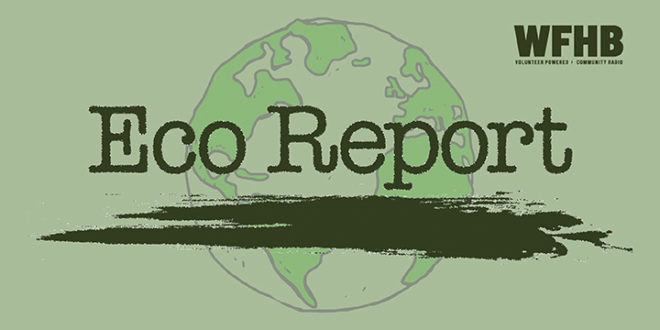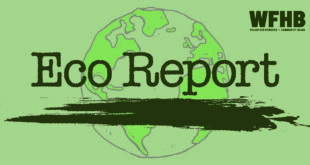Podcast: Play in new window | Download (Duration: 29:26 — 27.0MB)
Subscribe: RSS
Hello and welcome to Eco Report. Today’s anchors are Julianna Dailey and Cynthia Roberts-Hall.
Later in today’s program, Environmental Correspondent Zyro Roze attended the second public meeting for the Allen Street Greenway connector which will link Madison and Morton Streets in the McDoel Gardens neighborhood. We will have an excerpt from the event held yesterday by Hank Duncan, the City’s Bicycle and Pedestrian Coordinator.
And now for your environmental reports:
An Update on the Status of the Canadian Wildfires
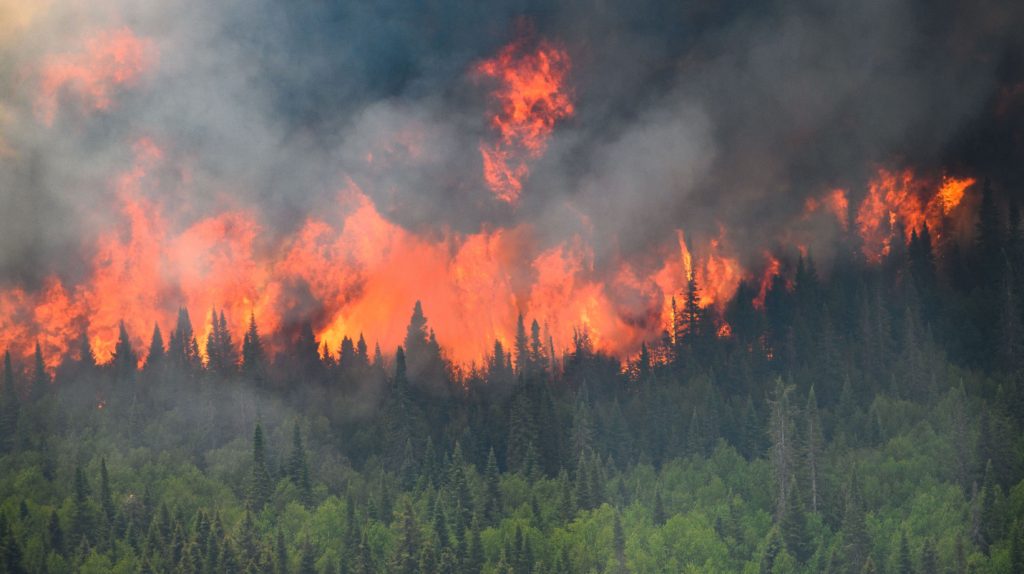
This story updates the status of the Canadian fires. Canadian wildfires have released 290 megatonnes of carbon emissions from January to July 2023, more than doubling the previous annual high of 138 megatonnes of carbon emissions in 2014, according to Copernicus Atmospheric Monitoring Service. The emissions for this year are set to keep rising as fires continue to blaze, with fire season typically spanning from May to October.
Canada’s wildfire emissions this year make up about 25% of global total emissions from wildfires, Copernicus Atmospheric Monitoring Service reported. Major wildfires are currently burning across the country.
According to the Canadian Interagency Forest Fire Centre, there are 1,052 wildfires burning in Canada, with 666 of these fires considered “out of control” burns. The fires are particularly affecting British Columbia and Northwest Territories, and most of Canada’s territories have been impacted by wildfires since May. Wildfires are also affecting the Arctic Circle, the service reported.
“We have been monitoring the emissions from wildfires right across Canada for three months since the beginning of May, during which time they have continued to increase almost continuously to a level which is already considerably higher than the previous annual total fire emissions for Canada in our dataset,” said Mark Parrington, senior scientist with the Copernicus Atmospheric Monitoring Service, said in a statement. As fire emissions from boreal regions typically peak at the end of July and early August, the total is still likely to continue rising for some more weeks and we will continue to monitor.
The wildfires in Canada have contributed to poor air quality around the country and in the U.S. for months, and by the end of June, emissions for the first six months of the year had already surpassed the record high, reaching 160 megatonnes. The 2023 fire season has also hit a record high for the amount of area burned, with over 32 million acres burned, Reuters reported. At the usual estimate, 32 million acres reflects nearly 13 billion trees.
Copernicus Atmospheric Monitoring Service noted that climate change was contributing to conditions that raise the chances of longer fire seasons, and rapidly increasing surface air temperatures in the Arctic could also be playing a part in the record-breaking fires.
One thing that is overlooked is that nearly all of Canada’s forests are now warm enough to be targeted by beetles. Between fire and beetles, the future of Canadian forests is not bright.
One thing that is often overlooked by mainstream media is that nearly all of Canada forests are now warm enough to be targeted by beetles.
—Norm Holy
Reasons for the Fires in Hawaii
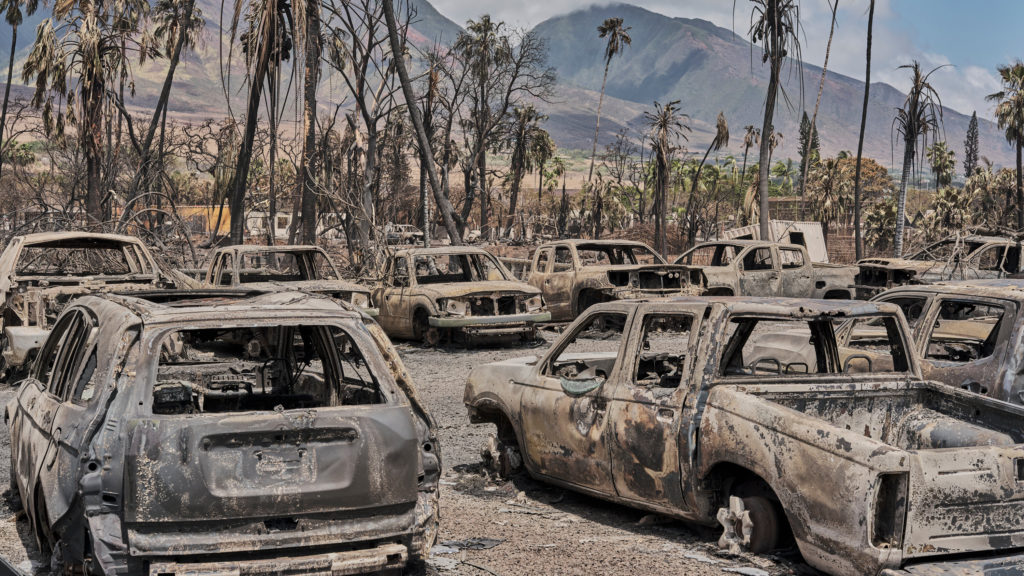
The New York Times reports on the reasons for the fires in Hawaii. The fires in Hawaii are shocking to all of us. Its happened in a state defined by its lush vegetation, a far cry
from the dry landscape normally associated with fire threats.
The explanation is as straightforward as it is sobering: As the planet heats up, no place is protected from disasters.
The story of this week’s blaze arguably began decades ago, when Hawaii started experiencing a long-term decline in average annual rainfall. Since 1990, rainfall at selected
monitoring sites has been 31 percent lower in the wet season, and 6 percent lower in the dry season, according to work published in 2015 by researchers at the University of
Hawaii and the University of Colorado. There are multiple reasons for that change, according to Abby Frazier, a climatologist at Clark University who has researched Hawaii.
One factor is La Niña, a weather pattern that has usually led to significant rainfall but began delivering less precipitation beginning in the 1980s. Those weaker La Niñas are not
bringing us out of drought, Dr. Frazier said in an interview earlier this year.
Another change: As temperatures increase, the clouds over Hawaii are thinner, Dr. Frazier said. And less cloud cover means less precipitation. On top of that, big storms have been moving north over time — delivering less of the rainfall that they typically bring to the islands.
—Norm Holy
Good News: Eurasian Beavers Reintroduced
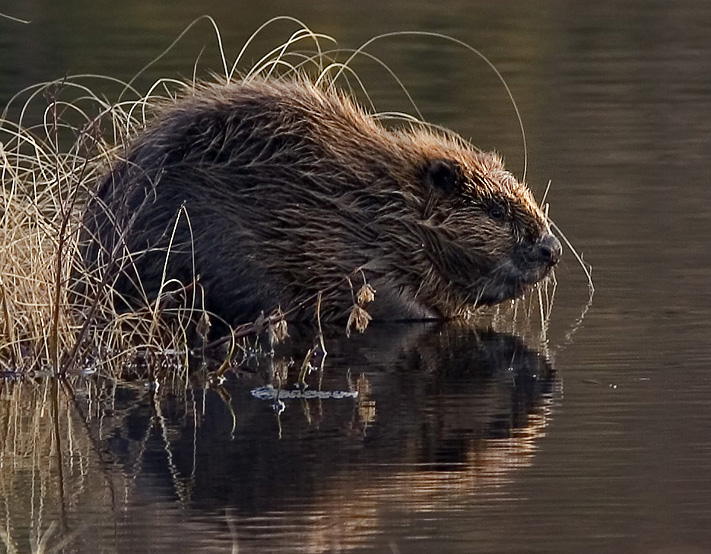
Now for some good news! Native to England, Wales and Scotland, the Eurasian beaver was hunted to extinction in the 16th century, according to The Royal Society for the Protection of Birds. But they have been slowly returning to England and conservationists say they are now being reintroduced to the Nene Wetlands nature reserve in Northamptonshire, England, for the first time in 400 years. The wetlands are 50 miles northwest of London.
Beavers’ gnawing behavior has a positive impact on their environment. By cutting back tree stems, homes for birds and insects are created from the regrowth.
(quote) This is an exciting and unique opportunity to see this iconic species return to the Nene Valley, bringing back both its natural habitat restoration skills as well as providing an opportunity for the visitors to see beavers in the wild at our most visited reserve,” (end quote) said Matt Johnson, Wildlife Trust in Northamptonshire conservation manager, in a press release.
—Norm Holy
Take-Home Message: Greenland is Vulnerable, says Geoscientist
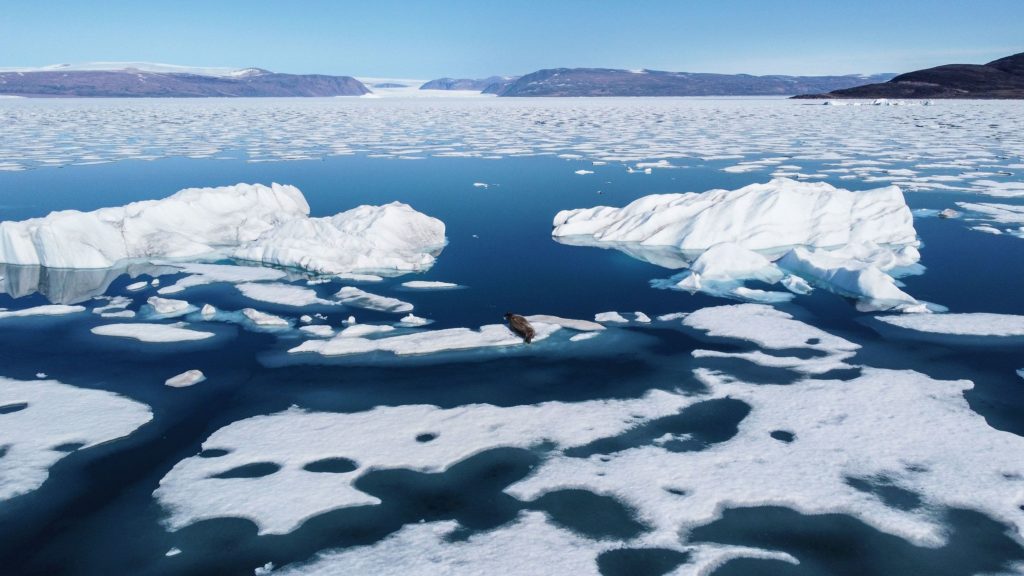
In 1966, scientists at Camp Century, a now abandoned U.S. military base in the Arctic, drilled deep into the Greenland ice sheet, extracting a cylinder of ice nearly a mile long along with 12 feet of the frozen sediment that sat beneath it.
That was a pretty miraculous engineering feat that has been really hard to repeat, said Andrew Christ, a geoscientist who recently completed a postdoctoral fellowship at the University of Vermont.
The sample was the first deep ice core that scientists had ever collected, and over the decades that followed, the ice became the subject of intense scientific study, providing critical clues about the planet’s climate history. The same could not be said for the sediment, which was largely overlooked before vanishing completely.
In 2017, the sediment was rediscovered in a freezer in Denmark. Now, a study of the frozen samples is shedding new light on Greenland’s past and, perhaps, providing an ominous warning for the future. The findings, which were published in Science on Thursday, suggest that roughly 400,000 years ago the Camp Century site in northwestern Greenland was temporarily ice-free. They add to accumulating evidence that Greenland’s ice sheet has not been stable for the last 2.5 million years, as scientists once assumed.
The big take-home message from this is Greenland is vulnerable, said Paul Bierman, a geoscientist at the University of Vermont and an author of the new study. The ice sheet has melted in the past, and therefore it can melt again.
It isn’t clear what caused the Greenland ice to melt 400,000 years ago. There were huge changes thousands of miles from Greenland: the Rift Valley in East Africa was expanding. The carbon dioxide level was under 350 ppm.
—Norm Holy
Chronicling the Shift to Electric Vehicles

For years, many people who wanted electric vehicles had to get on a list and wait months for delivery—the result of demand that exceeded supply.
This equation is now changing. Automakers have ramped up EV production, and dealer lots have gone from a scarcity of options to, in some cases, a glut.
The shift to EVs needs to happen quickly if the United States and the world are going to make rapid progress in cutting carbon emissions. But we don’t yet know how large the public’s appetite is for electric vehicles, or whether auto dealers are ready to sell them in large numbers.
The stakes and the uncertainty can be overwhelming, but there are some encouraging signs. In the first half of 2023, U.S. customers bought 556,707 electric vehicles, which was up 47 percent from the first half of last year, according to Kelley Blue Book.
EV market share was 7.2 percent of the U.S. market for cars and light trucks, which was up from 5.7 percent in 2022 and 3.1 percent in 2021.
The Inflation Reduction Act passed by Congress in 2022 provides a federal tax credit of up to $7,500 to use toward an electric vehicle (EV).
Indy ranked among least friendly cities for electric vehicles. For the year 2022, Indiana ranked 35th in EV sales.
—Norm Holy
Feature Reports:
And now, Zyro Roze goes into the field to catch questions and feedback from community members regarding transportation planning and the design of the West Allen Street Greenway connector. A public meeting was held by Hank Duncan and consultant Brock Ridgeway alongside the B-Line Trail and was attended by Isabel Piedmont-Smith of the City Council, Greg Alexander of the Traffic Commission, Paul Ash, a near-by resident, and a handful of citizens interested in new bicycle infrastructure and accessibility for the disabled.
Upcoming Events:

Enjoy a Frog Talk and Hike at Spring Mill State Park on Sunday, August 13th, from 11 to 11:30 am. Meet the Naturalist Jill on the back patio of the Nature Center to learn about amphibians and their calls.
Enjoy a program on Outdoor Survival Skills at McCormick’s Creek State Park on Saturday, August 12th at 2 pm. Meet at the Nature Center to learn how to prepare for your next hiking and camping experience.
Learn all about Sassafras during the Get Sassy With Sassafrass program at McCormick’s Creek State Park on Tuesday, August 15th at 10:30 am. Meet at the Nature Center to learn about its uses and some controversy behind this tasty member of the forest.
Sycamore Land Trust is hosting a Wildflower Walk on Saturday, August 19th from 8 to 10:30 am at the Touch the Earth Natural Area near Columbus, Indiana. Enjoy the prairie habitat on the 10-acre native wildflower meadow with Education Director Mary Welz. Sign up at [email protected].
Brown County State Park is hosting an event titled Timber! Understanding the Timber Rattlesnake on Saturday, August 19th from 3 to 4 pm in the Nature Center. Get an up close and personal look at Indiana’s most venomous and most misunderstood snake. Learn its history and all about venom.
Credits:
This week’s headlines were written by Norm Holy.
Today’s news feature was produced by Zyro Roze and edited by Noelle Herhusky-Schneider.
Julianna Dailey assembled the script which was edited by Zyro Roze.
Julianna Dailey compiled our events calendar.
Kade Young and Noelle Herhusky-Schneider produced today’s show.
Kade Young is our engineer.
 WFHB Bloomington Community Radio
WFHB Bloomington Community Radio
